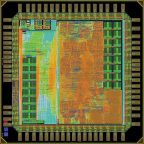When stepper motors operate, they operate by drawing current continuously. This method of operation ensures more accurate positioning and more consistent torque. However, this also means an increase of energy they use and the amount of heat they produce. This holds true even when the stepper motor is idling.
Idling is not a very efficient operating mode for stepper motors or drives. This because the drive is supplying current, and the stepper motor is consuming it, but nothing is moving. Such unnecessary current draw wastes electricity and increases operating costs. Ideally, the motor would switch off whenever rotation is not occurring. However, this has its own set of drawbacks.
Recall that stepper motors usually must ramp up and down from its start and stop positions. If this is not done the stepper motor may skip or stall. As such, the motor cannot simply “switch off and on” it must accelerate and decelerate at the proper rates.
Idling current means the motor is still responsive. To reduce energy consumption yet still ensure positioning accuracy, the drive can supply far less current during idling than what it supplies regular operating conditions. That way the system can avoid some of the ramping up and down.

Idle-current reduction usually reduces the current sent from the drive anywhere from zero to 100 percent depending on how the drive’s configuration. Some drives can drop the supply of current automatically after a set period of no rotation. Manufacturers of drives that include idle current reduction list these values and thresholds in their motor’s documentation. Make sure that a drive’s current reduction technique and the amount of reduction is compatible with your system. Extended periods of no activity mean the motor is best switched off rather than changed to idling current while shorter periods of no activity are best for idling current.
For more information on idle-current reduction, read …
Applied Motion Products: 3540M – DC Microstep Drive






Leave a Reply
You must be logged in to post a comment.